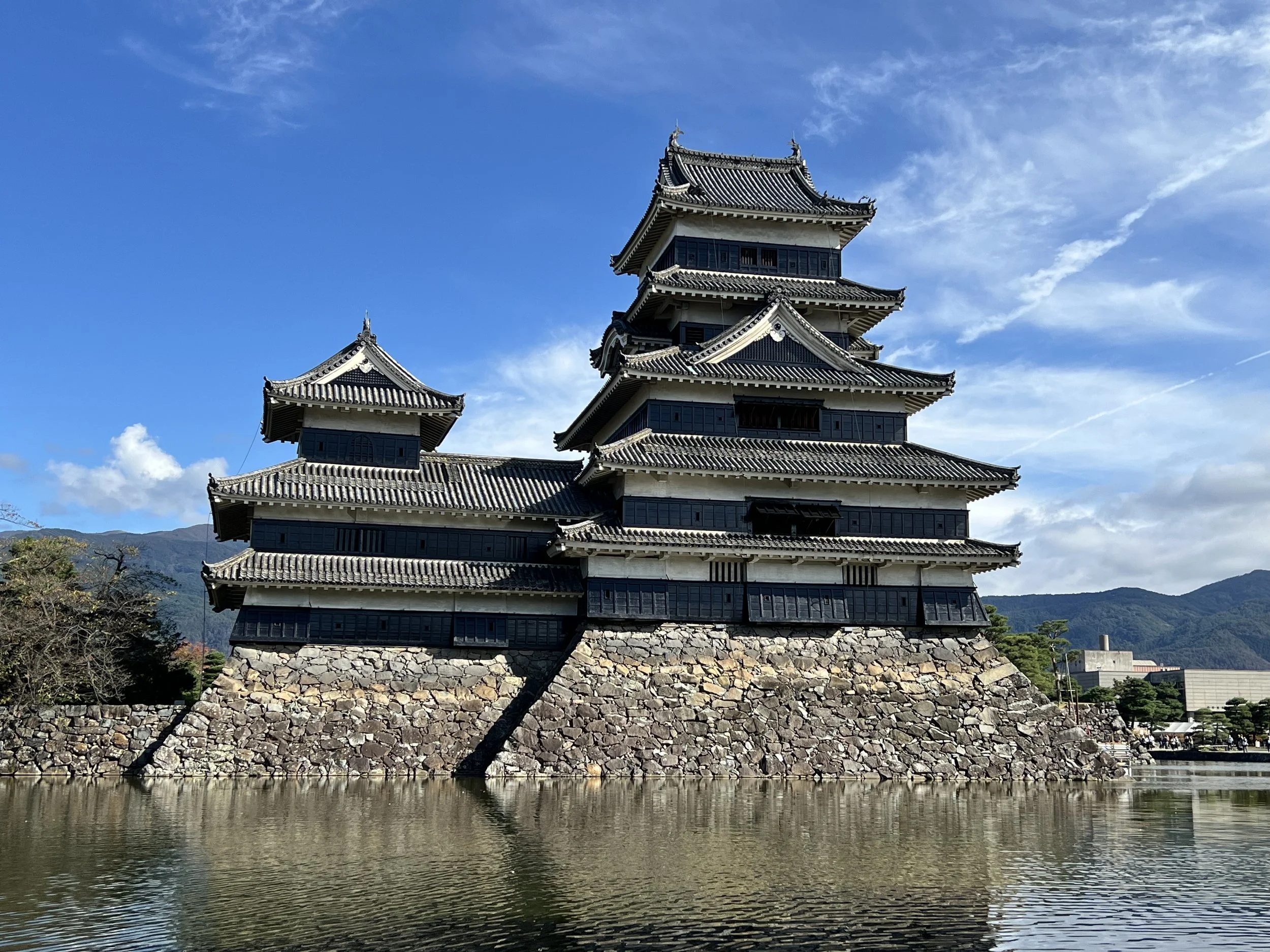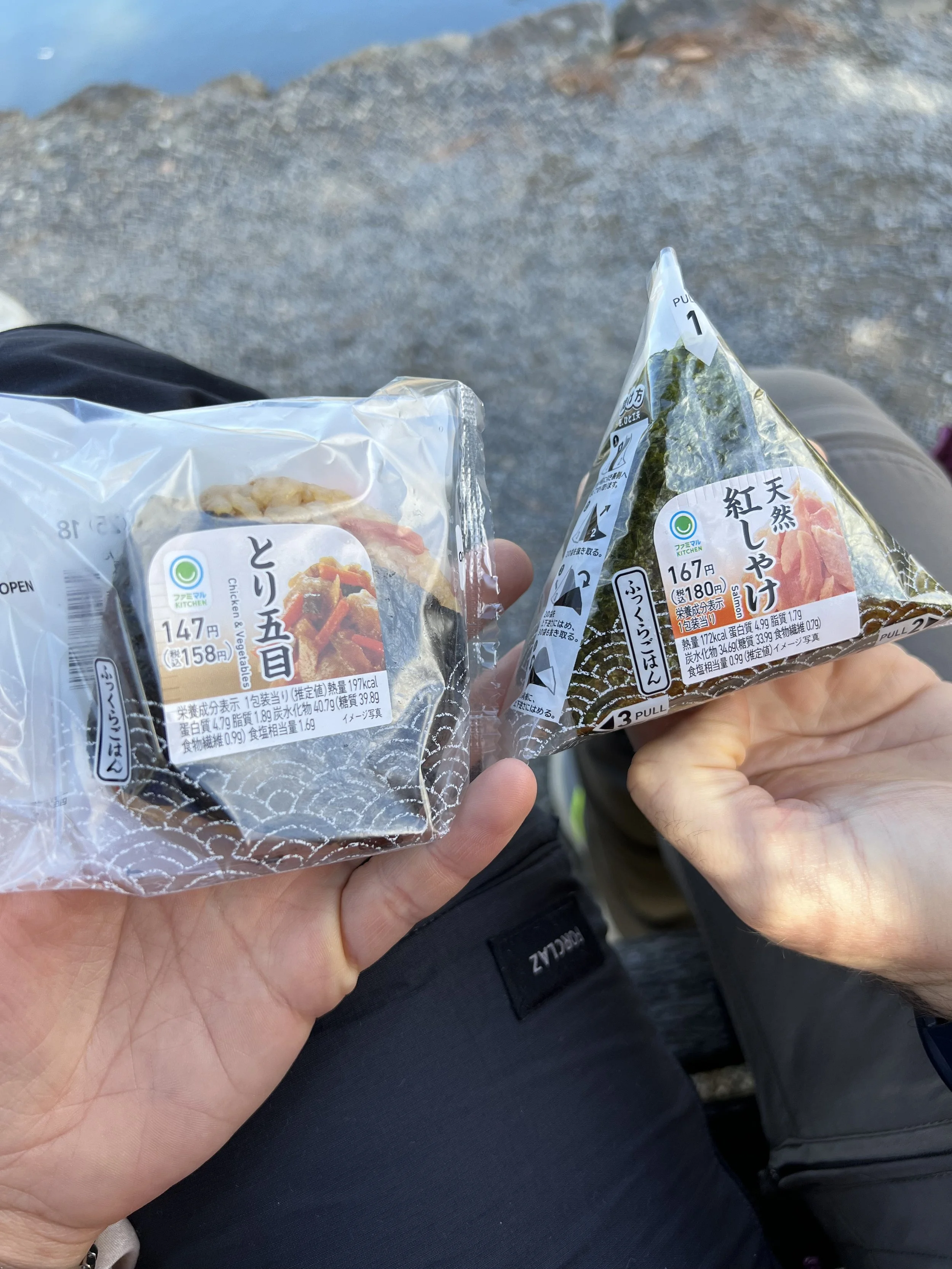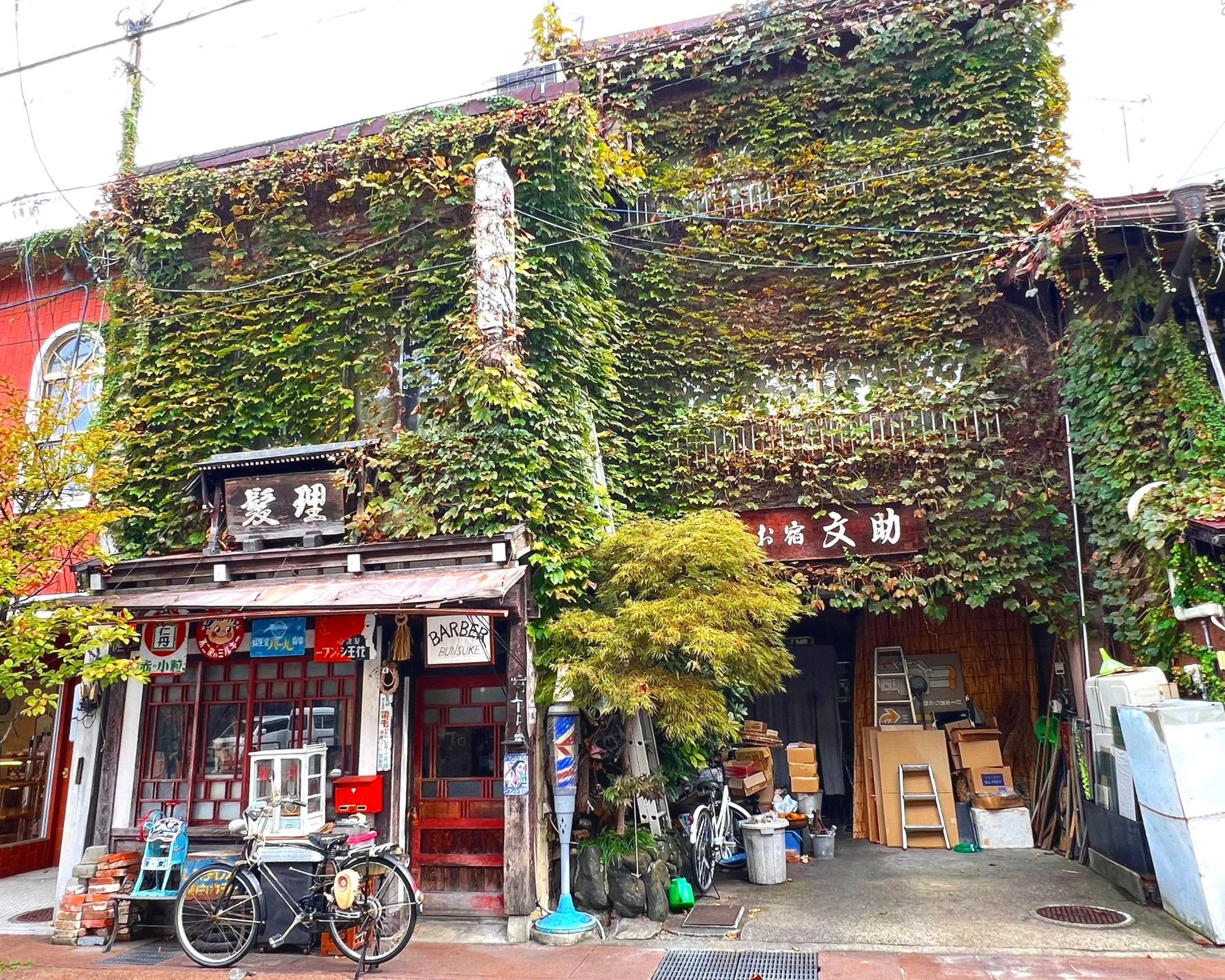Where to eat in Japan: the Japanese Alps
If you are a food lover like us, a trip to Japan can be a life-changing experience. Whenever I travel, I try to taste as many local specialties as possible and a big part of the trip turns around which are the best places to eat. The variety of ingredients and dishes is so rich, that even a three weeks trip, like the one I did this last October, felt like it was not enough to discover all the details. If you are a passionate about local food as me, and you are travelling to Honsu, the main island in Japan, I hope to inspire you with the best gastronomic moments from my trip. In order to reduce the size of the post, I divided my trip into three parts, matching the three different regions that we visited during our trip: Chūbu, Kansai and Kantō. This post is focused on the first part of the trip: Chūbu region, where the Japanese Alps are located.
Day 1: Magome
We decided to start our trip by going near the Japanese Alps, in the Gifu prefecture. Magome is a beautiful small village in the mountains, quite famous for its picturesque houses and a walking path used since the Edo period between there and Tsumago. This path, part of the Nakasendo trail, of approximately 8km one-way, traverses thick forests and small traditional villages, where you feel immersed in the Japanese nature.
It takes a bit of time to get there, but it is totally worth the trip. We landed in Tokyo Haneda and went all the way to Nagoya by train, which takes approximately 2h30. Once there, the JR Shinano train took us to Nakatsugawa Station (50 minutes approximately). In order to reach our last stop, Magome. I immediately fell in love with the place once there. We were staying at Magome Chaya, so we left our bags there and looked for a place for a quick meal.
Japanese Soba at Magome Village
This was our first japanese meal, so we were feeling quite excited about it, but it was quite late, so we kind of enter in the nearest place open. To our surprise, we found this small place, Nakaizutsuya (中井筒屋), where we order Nikumori-soba and Curry-soba, which turned out to be delicious, as well as a traditional local dish called Goheimochi. These are made of rice paste, coated with soy sauce and sugar, and grilled afterwards.
Japanese Soba
Soba are made strictly from buckwheat flour, which makes it a good choice for gluten-free diets. It is a source of fibre, proteins and essential minerals, whereas they are low fat. They are consumed all-year in Japan, but they are specially popular during new year, where they are eaten as a symbol of longevity. Plus, they are delicious!
Diner and breakfast at Magome Chaya
We then did the 8km path from Tsumago to Magome. For this, we took a bus from Magome to Tsumago, we found this link quite useful for planning the schedules. We decided to do it in the opposite way, since it was getting quite late and we wanted to be back for our dinner at Magome Chaya. Take a look at the review I wrote about this great Guest House & Restaurant to have information about the delicious seasonal & local dishes we had that night.
Day 2: Matsumoto & Hirayu Onsen
On our second day, we took a bus from Magome back to Nakatsugawa, where a train took as to Mastumoto. Matsumoto is a small sized city sourrounded by mountains, where the most iconical site is the Matsumoto Castle, one of the most famous castles in Japan. Its origins go back to 1504, before the Edo period.
We arrived early in the morning and we enjoy a nice walk through the calm streets of the city center. Before heading towards the Castle, we did the first of the many stops we would do at a Japanese konbini during our trip. Konbini are small convenience stores that you can find around almost every corner in the city, such as 7-eleven or Family Mart. You can find cold & hot snacks for a cheap price, and although the quality is not the same that you find in a restaurant, they are quite the life-saver when you need to stuck to your budget during a long trip.
Another very nice finding in Matsumoto were Nawate Dori alley & Nakamachi Dori, full of craft stores and small coffee shops, ideal for doing a break and get some beautiful homemade pottery.
In the afternoon, we rented a car in Toyota-rent-a-car and headed towards the inside of the Japanese Alps, where the final destination was Hirayu Onsen, a hot spring village. We were staying at Oyado Eitaro, a medium budget hotel with tatami floors, futons and indoor and open-air hot spring small pools that can be privatized for 30 minutes.
At dinner time, we spent quite some time wondering around the village, trying to find a place to eat. To our surpise, everything was fully booked, so we recommend asking the hotel to book a table in advance. Nevertheless, we finally found a table at Yoshimoto. We hesitated a bit because the rating was not great, but in the end I ordered the Katsu Don. This turned out to be one of my favorite dishes from Japan. It is a simple, comforting dish, that consists on Panko-breaded pork cutlets with a slightly cooked egg over a bowl of rice. Plus, the price of the dishes was quite correct (about 1000 Japanese yens each). After the dinner we headed towards Hirayu no Mori, where we could have a very nice hot bath at the beautiful and numerous open air pools sourrounded by trees.
Day 3: Takayama and Hida-Furukawa
Takayama City
The next morning we did about a 45 min drive to Takayama, a city in Gifu prefecture, with a lovely historic district. This district, called Sanmachi Suji is full of wooden houses dating to the Edo Period, where you can find all kinds of Japanese crafts, Sake breweries and local specialties.
There are many ancient temples to visit in the town by foot. You just need to follow the circuit already indicated by the city town, in order to see the different beautiful buildings, the cementery sourrounded by the forest, as well as Shiroyama Park, where you can visit the ruins of Takayama Castle (careful with the bears!).
When we arrived we headed towards the morning market, Miyagawa, where you can enjoy many local specialties, buy japanese vegetables and fruits, or do some souvenirs shopping. The smell in the street due to all the teppanyakis is just mouth-watering! We started with some Hida-beef sushi, a local specialty that you can find at some places in the market. Then we tried the Hida-beef yakitoris from Hidagyu no komori, which turned out delicious, followed by some Nikuman (Japanese fluffly steamed buns filled with pork and cabbage). Finally, we got our sweet treat: Warabimochi, a gellatinous dessert made from warabiko (bracken starch) and covered in kinako (sweet toasted soybean flour), from Kanmidokoro. In this case it was a matcha flavored Warabimochi, so it was covered in matcha powder, which gave a nice bitter touch to the recipe. Of course, we couldn’t miss to pair it with a matcha latte. Do not miss this lovely market!
Hida beef
Hida beef or Hida gyu, is a high quality beef, considered one of the finest in Japan. The meat comes from the black-haired cattle breed from Gifu Prefecture raised in strictly controlled conditions in terms of food, water and sourroundings. The farmers are to take care of the cows in the The distinction is only given to the meat with outstanding flavor.
Hida Furukawa
In the afternoon, we headed towards Hida-Furukawa, a small city in which the film Your Name was inspired. The historic center of the city is similar to that of Takayama, with its streets full of wooden traditional houses from Edo period. It was very nice to walk its street during the sunset, where we were almost the only ones walking around.
But, the most unforgettable experience was the night we spent at Yatsusankan, an ancient Ryokan that is just ashtonishing. It was definetely the best stay we had during our trip, worth the price even if the night was expensive compared to the other hotels we did. Please follow the link towards my entry where I tell you all the details about the gastronomic experience at this Ryokan, if you are interested in knowing more. I leave you some photos to tempt you:
Day 4: Hida Furukawa and Shirakawa-Go
In the morning we spent some time walking the street in Hida Furukawa after the wonderful breakfast we had at Yatsusankan. It is worth to visit the streets from the historic town, and visit the Festival Exhibition Hall, a small museum dedicated to the local festival. There is only one big room to see, but people is very nice and we had a fun time seeing the video from the festival. One must shop to visit if you like herbal tea is Hida Mori no Megumi where the friendly seller will recommends the most appropiated herbal mix for you and will let you have a try.
Shirakawa-go is a group of villages inside the Japanese Alps where the buildings are mainly traditional Gassho-style farmhouses. We really recommend the non-toll road to get there, because even if it is narrow and full of curves, the landscape was astonishing, specially during autumn. It was very nice to spend some hours wondering around Ogimachi village, although the restaurants offer was limited and often quite busy. We had the chance to grab a table at one of the teishoku restaurants (common style japanese meals), where the food was correct though nothing outstanding. Then we visited Wada House, an ancient gassho-zukuri house that belonged to an important family, where tours are offered inside.
That night we stayed at Gokayama Base next to Ainokura village, a lovely guest house beautifully decorated and hosted by a really nice old man. Careful if you want to have dinner there, because you will need to book in advance. The host from Gokayama called the restaurant in the village for us, Sakaide, where they opened only for us! The dinner was nothing fancy, but the noodle soup was very comforting, the prices low and the chef was very friendly.
View of Ogimachi village
Day 5: Shirakawa-Go and Kanazawa
On our last day at the Japanese Alps, before going to the Kansai region, we visited Ainokura Gassho-zukuri Village, one of the last stops at the Shirakawa-go route. There, we took a small walking path that leads toward a viewpoint of the village, where you can appreciate the traditional houses, the rice fields and the mountains from above. We also went to a small washi paper workshop, where we got to do a quick demonstration in about 10 minutes of how washi paper is done with the help of the owner. They also have a shop where we got to buy many washi paper souvenirs for the family, the animal figurines are beautiful!
Then we took the car to do a 1h drive towards Kanazawa, where we could give the car back and do a quick tour before getting the Shinkansen towards Kyoto.
Kanazawa is a medium size city with a great food market, Omicho Market, and one of the considered most beautiful Japanese gardens in the country, Kenroku-en, that we really recommend visiting.
Omicho Food Market
At Omicho Market there are plenty of things you can eat, from fresh sushi and sashimi, grilled Unagi (Japanese eel) and lots of other fresh products. We tried the grilled Unagi which was delicious, as well as some grilled scallops.
We ended with these lovely Japanese waffles, which you could buy with different flavours such as sweet potato, pork, beef, and also some sweet ones such as matcha tea. They made for a nice lunch break and adapted for low budgets!
Finally we went to visit the Kenroku-en Japanese garden, which we found to be beautiful and worth visiting. You can spend a couple of hours enjoying the peace of the place and the maples that were starting to become red at the period we went, it feels like the trees are be setting on fire, go look and see.
I hope you enjoyed this review about the first part of my gastronomic trip to Japan around the Japanese Alps. If you liked this post, do not hesitate to read the two following parts that are coming for the Kansai and Kanto regions. You will end up wanting to travel to Japan as much as I did!
Written by Marta - The Cherry Pickers






























